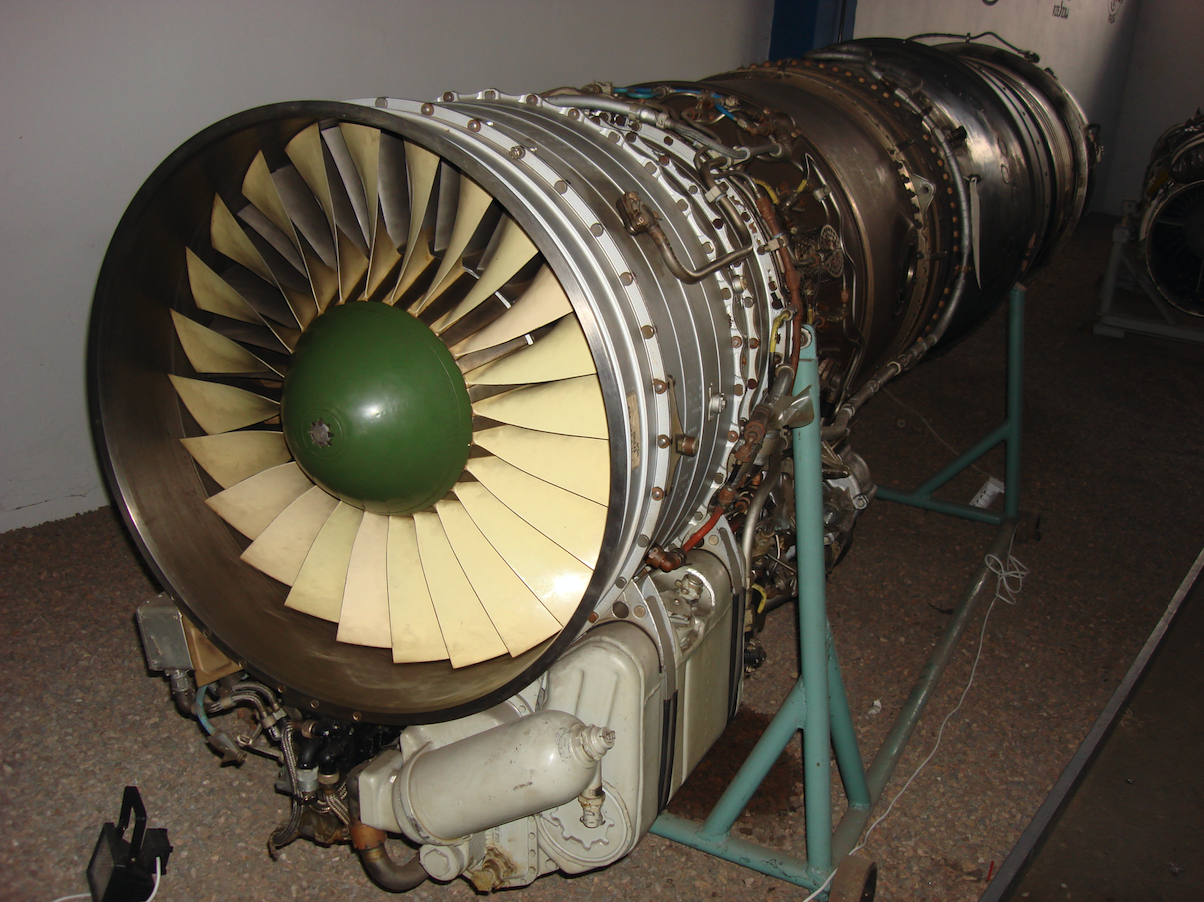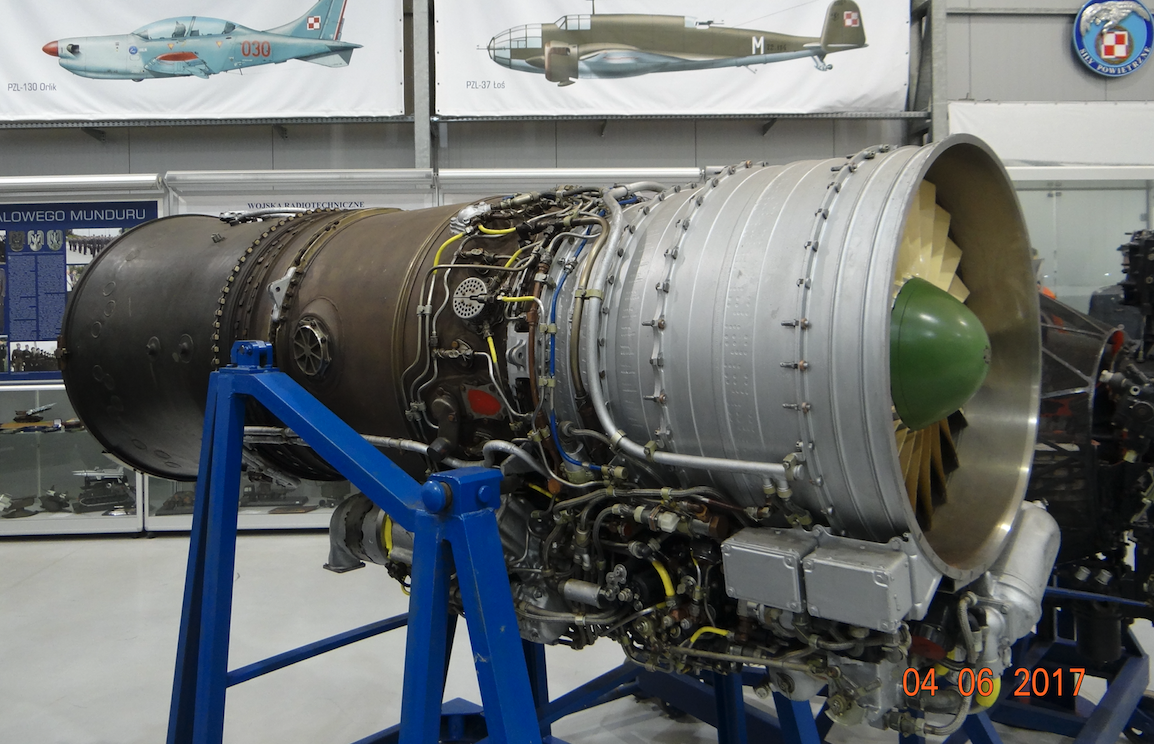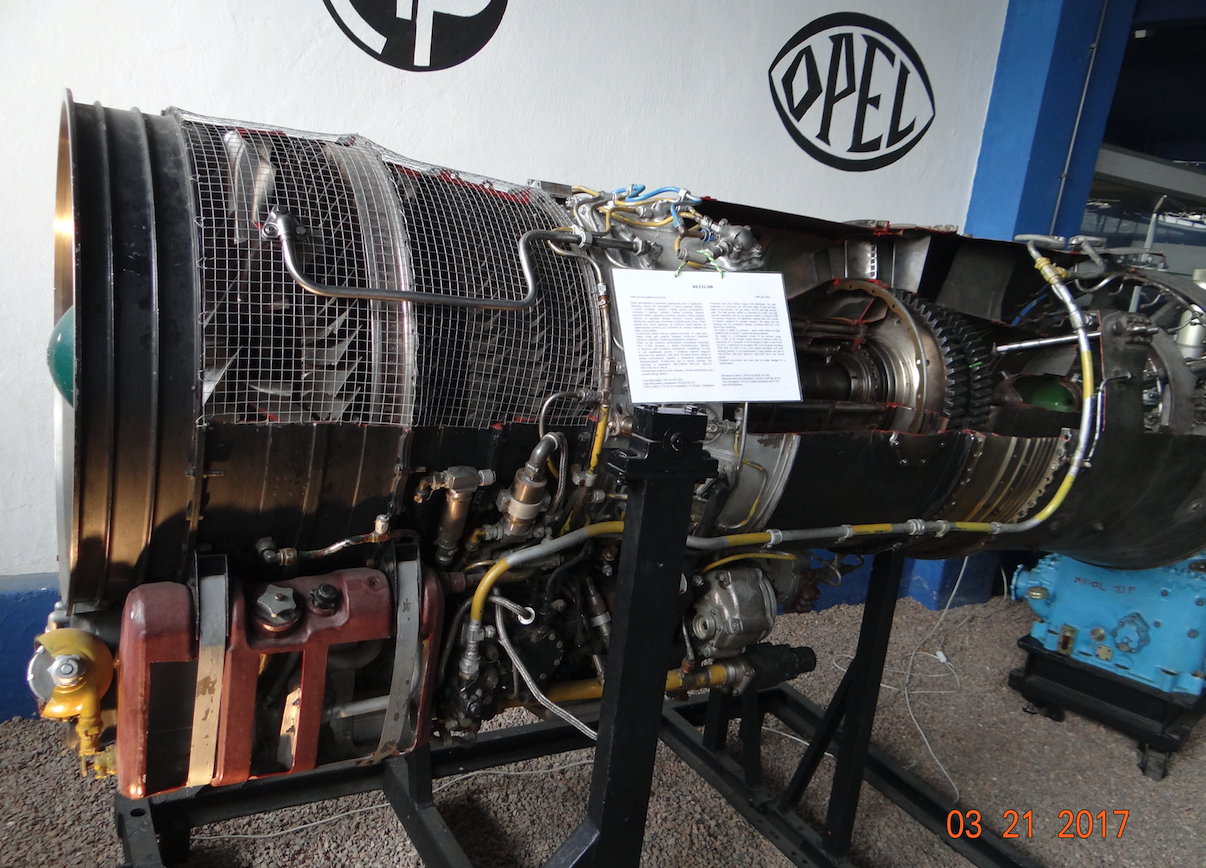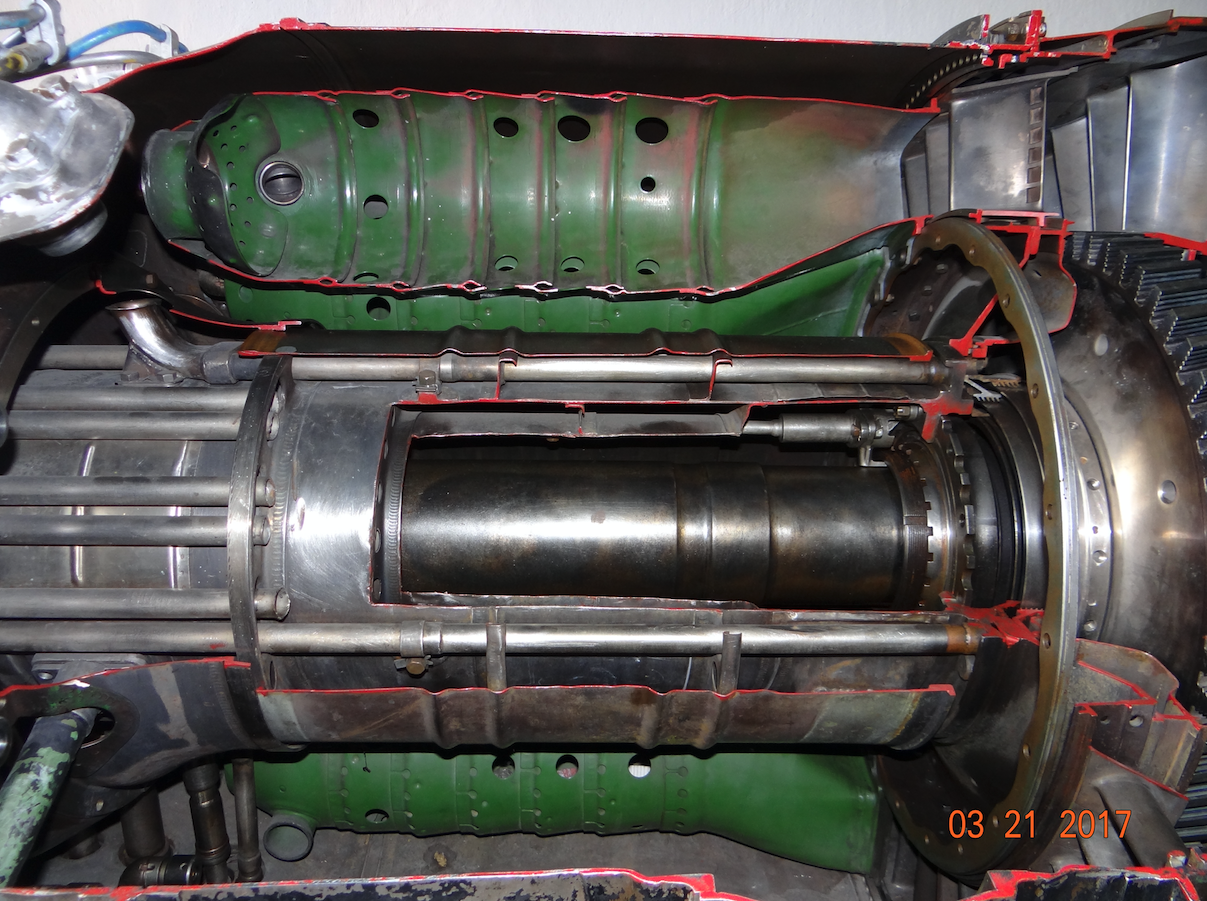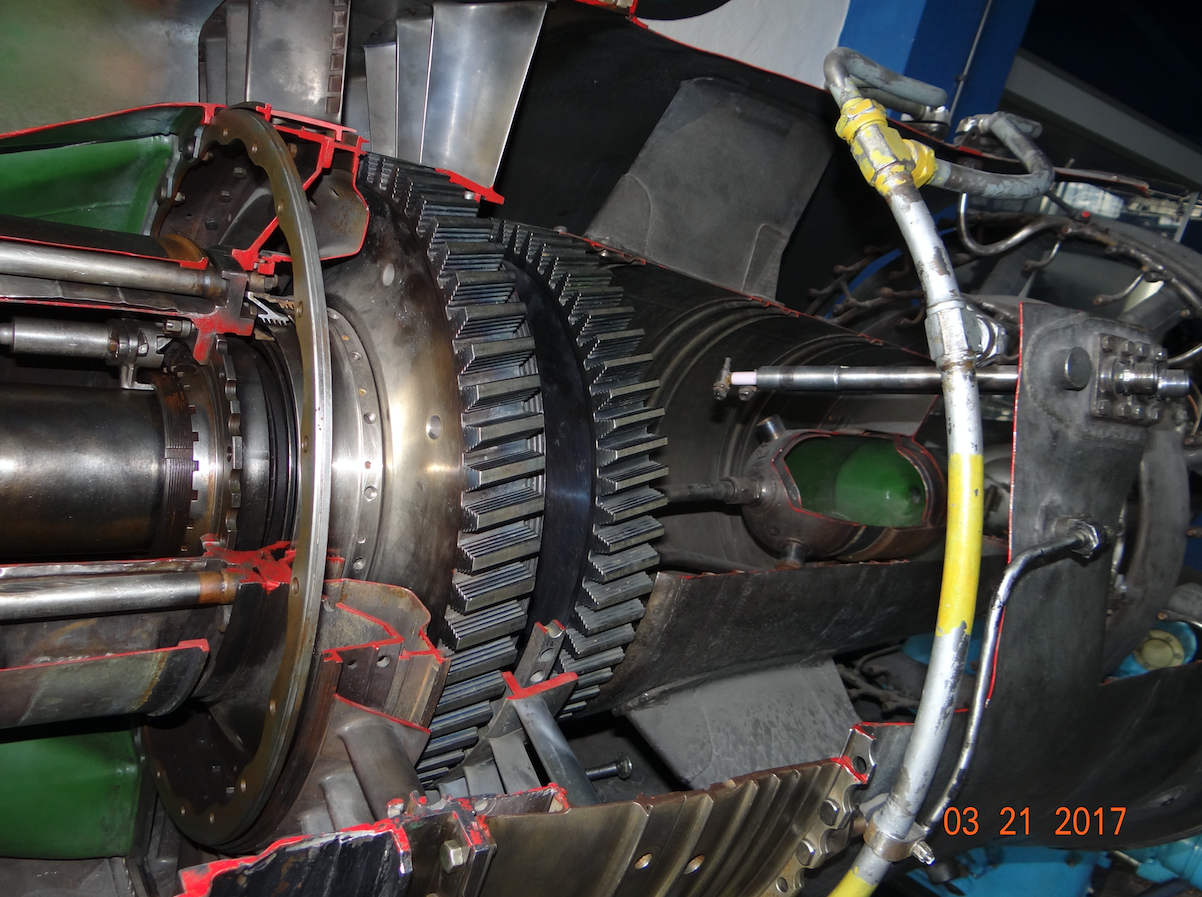Kraków 2020-11-01
The history of the RD-11 / R-11 engine. 1955 year.
Information on Bristol Olimpus and General Electric J57 engines penetrated the CCCP. In 1952-1954, the Moscow Aviation Institute made aerodynamic calculations for a turbojet engine with a system of two shafts (propellers, spools). The calculations were carried out to achieve the speed of Ma 2 by the future aircraft. The main difficulty was to create a compressor with high stability and sufficient gas-dynamic efficiency in the whole range of forward speed. The calculations showed that such an engine will have an easier start-up cycle, will respond better to the throttle response (it will be more tolerant to sudden movements of the gas throttle), and will also be characterized by lower fuel consumption. Based on these calculations, Sergei Tumansky developed the RD-11 engine, which became the drive of the MiG-21 fighter plane. It is definitely a better engine than the RD-9 predecessor. By the time the designer Aleksandr Mikulin lost his position in the OKB-300 in 1955, his team had already started working on a breakthrough turbojet engine in CCCP. The engine was initially designated AM-11, later RD-11 and eventually R-11. Aleksander Mikulin was succeeded by Sergey Tumański, who led the work on the program.
In 1954, Aleksandr Mikulin managed the entire work. He appointed Sergei Tumanski to lead the technical project, and Boris Sergeyevich Stechkin (Борис Сергеевич Стечкин) as a scientific consultant. Work officially began in May 1953. Initially, the AM-11 engine had four bearings on each shaft. This, however, could cause difficulties in future renovations. The engineers spent a lot of time designing the compressor so that it could be replaced without completely disassembling the engine. It was a step towards a modular engine design. A maximum temperature limiter in front of the turbine has been developed for the engine. A limiter of the rotational speed of propellers was also introduced.
Now there are events, typical of the CCCP, that led to the removal of Alexander Mikulin from his position. It was done by the Minister of the Aviation Industry, Pavel Dimitriev (Пётр Васильевич Дементьев). By the way, Paweł Dmitriev was the minister of the aviation industry in the CCCP from 1953 to 1977, when he died. It was a lifetime position at CCCP !? In some publications it is stated that Aleksandr Mikulin was "seriously ill". The OKB-300 office was controlled by many commissions. Charges were formulated against Alexander Mikulin. Among the allegations was the statement that "there is no use of a twin-shaft turbojet engine in the world so far," which was a clear lie. It was probably about hiding information obtained by Soviet intelligence in the West to protect spies. Because the Russians did not stop working on the AM-11 engine and began flight tests. They only changed its designation, which was supposed to suggest starting a new program.
The first start-up of the engine marked R-11-300 took place in 1955, on a ground station. The engine had a thrust of 5,100 kg (50.03 kN) with afterburning. After the tests, the engine was approved to begin flight tests. The engine was mounted on an experimental E-5, which made its first flight on January 9, 1956. The pilot was V. A. Niefiedov. On February 20, 1956, during subsequent flights, the turbine blades were damaged. The situation repeated itself in May 1956. Throughout the summer of 1956, designers tried to solve the problem, but to no avail. It so happened that Sergey Konstantinovich Tumansky (Sergey Konstantinovich Tumansky) on October 18, 1956, introduced a ban on aircraft with R-11-300 engines. Further work resulted in enlarging the combustion chamber and improving its cooling. Engine speed up time has been increased. Most important problems have been resolved. Engine designation changed to R-11F-300 (F – forced). The number "300" in the name of the engine means the plant where the OKB office operated. All engine tests were completed on June 30, 1958, and a certificate of release to flight was issued.
The basic version of the R-11F-300 engine has a thrust of 3,800 kG (37.27 kN) without afterburning and 5,625 kG (55.16 kN) with afterburning.
The pressure from the Kremlin to launch the production of the new fighter was so great that in 1957, the serial production of the MiG-21 (first version) with R-11F-300 engines was started at the plant No. 31 in Tbilisi. Only 5 planes were built because the machine was underdeveloped and suffered from numerous defects. Mainly engine control. It was not until May 1958 that the engine and the plane were refined and the serial production of the MiG-21 F was launched.
Construction of the R-11 engine.
Structurally, the R-11 F-300 engine was built as a single-flow, two-shaft, with an adjustable outlet nozzle. It consists of a 3-stage first shaft compressor, a 3-stage second shaft compressor, a combustion chamber, 1-stage second shaft turbine, 1-stage first shaft turbine, an afterburner chamber and an adjustable outlet nozzle. The box of aggregates and oil systems is located under the engine. Two pumps supply fuel to the engine. The first supplies the combustion chamber, the second supplies the afterburner. The engine is started by means of a current-starter, which, after starting the engine, works as a generator.
Engine length approximately 4.55 m, diameter 0.906 m, weight approximately 1,200 kg (dry 1,124 kg). The period between engine overhauls is 300 flight hours. The compressor compression is 8.9: 1. Approximate fuel consumption; 0.9 kg of fuel / kG / 1 hour without afterburning and 2.4 kg of fuel / kG / 1 hour with afterburning. In other words: 97 kg / (h kN) (0.95 lb / (h lbf)) at idle and 242 kg / (h kN) (2.37 lb / (h lbf)) with the afterburner. Thrust to weight ratio: 53.9 N / kg (5.5: 1).
It is worth mentioning here about a small but significant change, i.e. moving the aggregates and oil systems box from the top of the engine to its bottom. Previously, when the oil system leaked, the leaking oil ignited from hot engine components and caused a fire. Now the dripping oil did not catch fire so easily.
In the MiG-21 aircraft, air to the engine is supplied through the frontal-central air grasp, provided with a cone. The cone is axially movable and can automatically occupy one of three positions. It is a way of regulating the amount of air taken in and its pressure in the inlet duct. In the supersonic flight, oblique shock waves are generated on this cone. One of their effects is the reduction of air velocity to subsonic velocity. This is necessary because the engine compressor runs in air at subsonic speed. Immediately after the cone, the air duct splits around the cabin on the sides to connect just in front of the engine. The air duct is equipped with two sets of vent-tabs. The first set is located on the sides just behind the air grip, the second is at the height of the pilot’s cockpit. Their basic task is to prevent the occurrence of engine pumping, an undesirable phenomenon that leads to its stalling. In a word, the axial movement of the cone and the vent tabs ensure optimal operation of the engine compressor, whether on the ground or in the air, without the intervention of a pilot.
The S. K. Tumański R-11 engine was built in the number of about 21,000 units. It was the primary propulsion system for MiG-21, Yak-28 and Su-15 aircraft. The version without afterburning powers the Jak-25, Su-25. Development versions were the R-13 and R-25 engines.
Basic data of the R-11 F2S-300 engine:
The maximum thrust without afterburning is 3,950 kG. Maximum thrust with afterburning 6 120 kG. Engine weight 1 194 kg. Fuel consumption 0.96 kg / kGxh without afterburning, and 2.37 kg / kGxh with afterburning. In Poland, the engine was installed in the following planes: MiG-21 PFM, MiG-21 R, MiG-21 M, MiG-21 MF.
Written by Karol Placha Hetman

